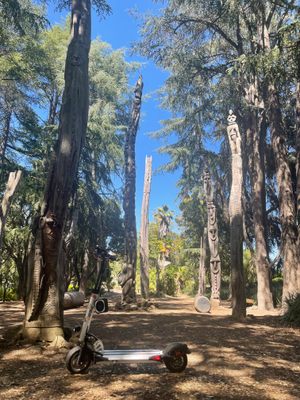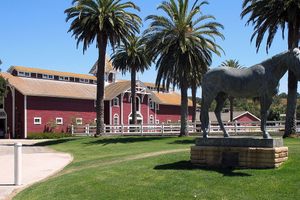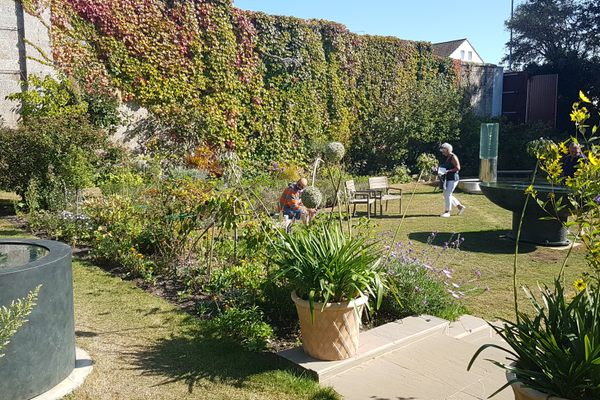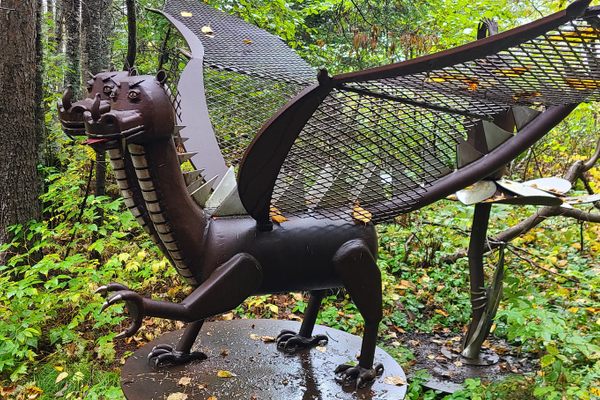About
Created by a group of visiting artists, the works in the somewhat hidden Papua New Guinea Sculpture Garden at Stanford University offer a uniquely tribal feel to the otherwise traditional Californian campus. A former graduate of the Stanford Department of Anthropology, Jim Mason, invited the sculpturers to leave the Sepik River for the first time.
Placed in an out of the way grove of oak and cedar trees, the dozens of works that comprise the traditional art garden were created by a group of 10 Papua New Guinea artists who visited the campus in 1994. The master carvers, ranging in age from 27 to 73, had never been to the United States before the project brought them there and indeed, some had never previously left Papua New Guinea. Comprised of more than 20 sculpted poles featuring patterns and figures of a New Guinean design, multiple standing figures, carved drums, and other assorted works, the garden is a stark contrast to the surrounding architecture. The creations in the garden are made only of stone and wood carved using simple tools, some handmade, and inherited techniques.
The wood used for the art pieces was imported from Papua New Guinea, whereas the stone for the carvings was derived from Mono Lake, California.
While not hugely publicized by the university, the Papua New Guinea Sculpture Garden remains today, over two decades later as a lasting example of collaboration with a culture that is not often given the attention their arts clearly deserves.
Related Tags
Know Before You Go
Parking can be problematic because the garden is located on campus. Visiting on the weekends offers more opportunities to find available spaces. The Cantor Arts Center offers free tours the third Sunday at 2 p.m. of every month, rain, or shine. Meeting location for the tour is at the garden entrance, the corner of Santa Teresa and Lomita Drive.
Community Contributors
Added By
Published
April 16, 2014








































































